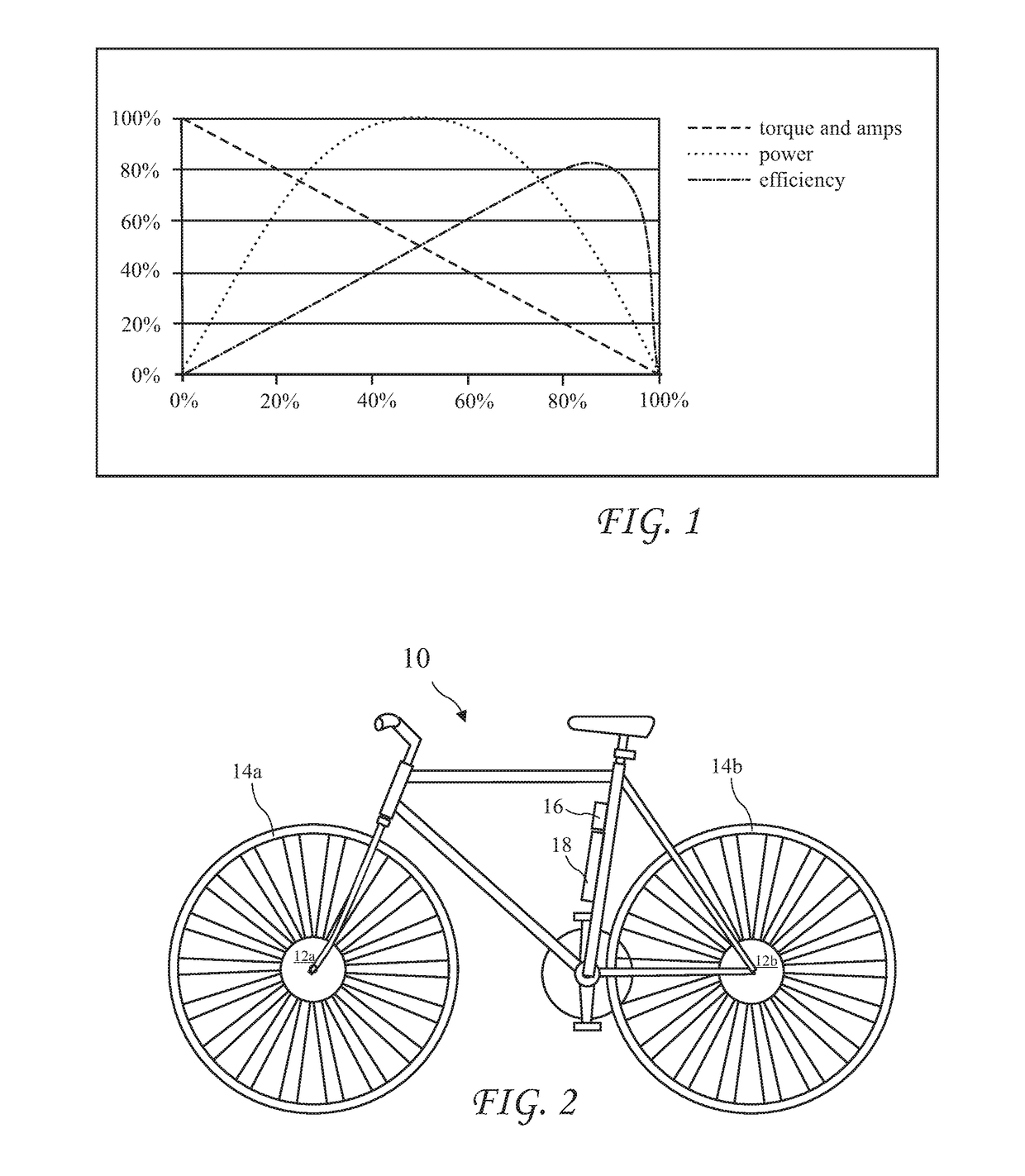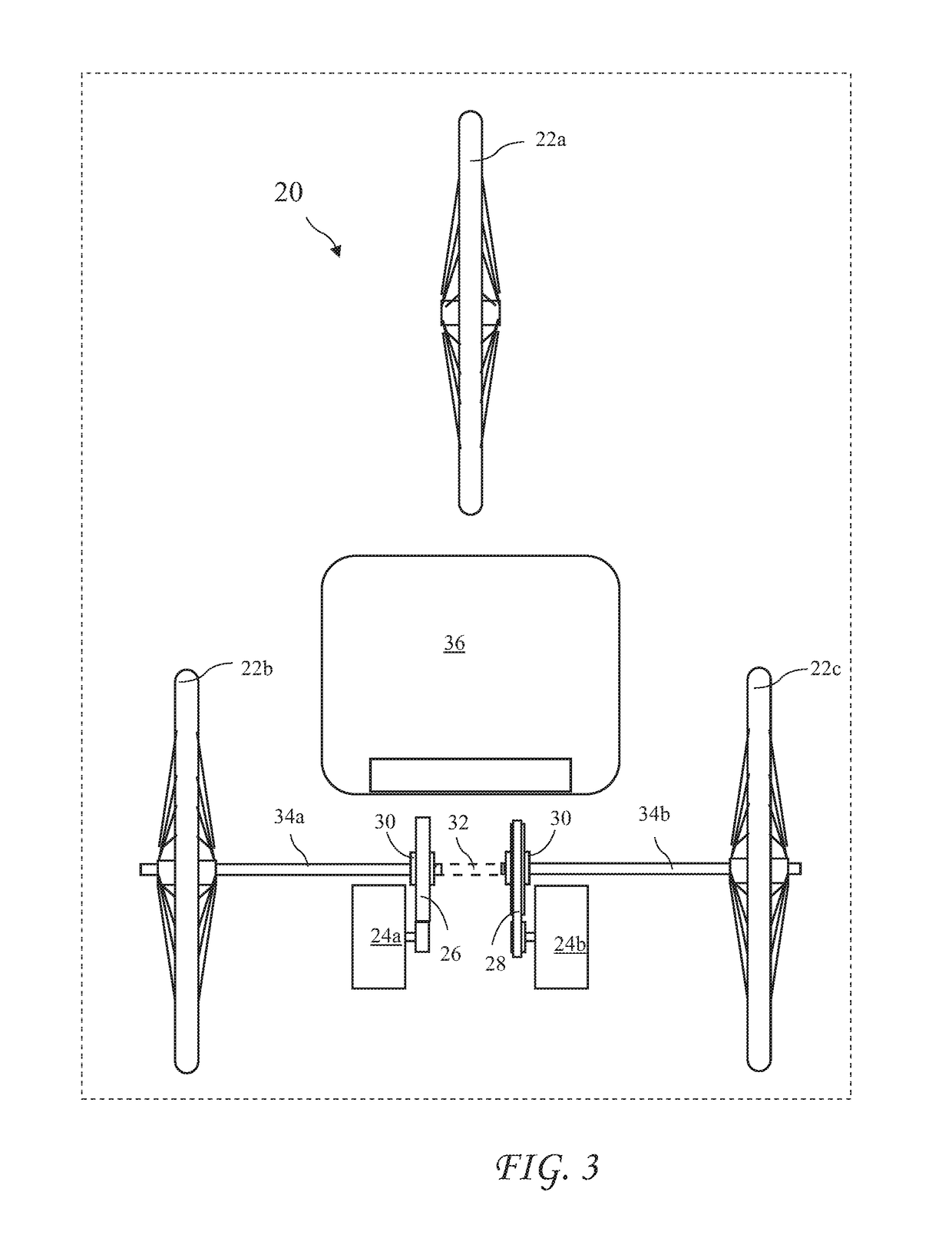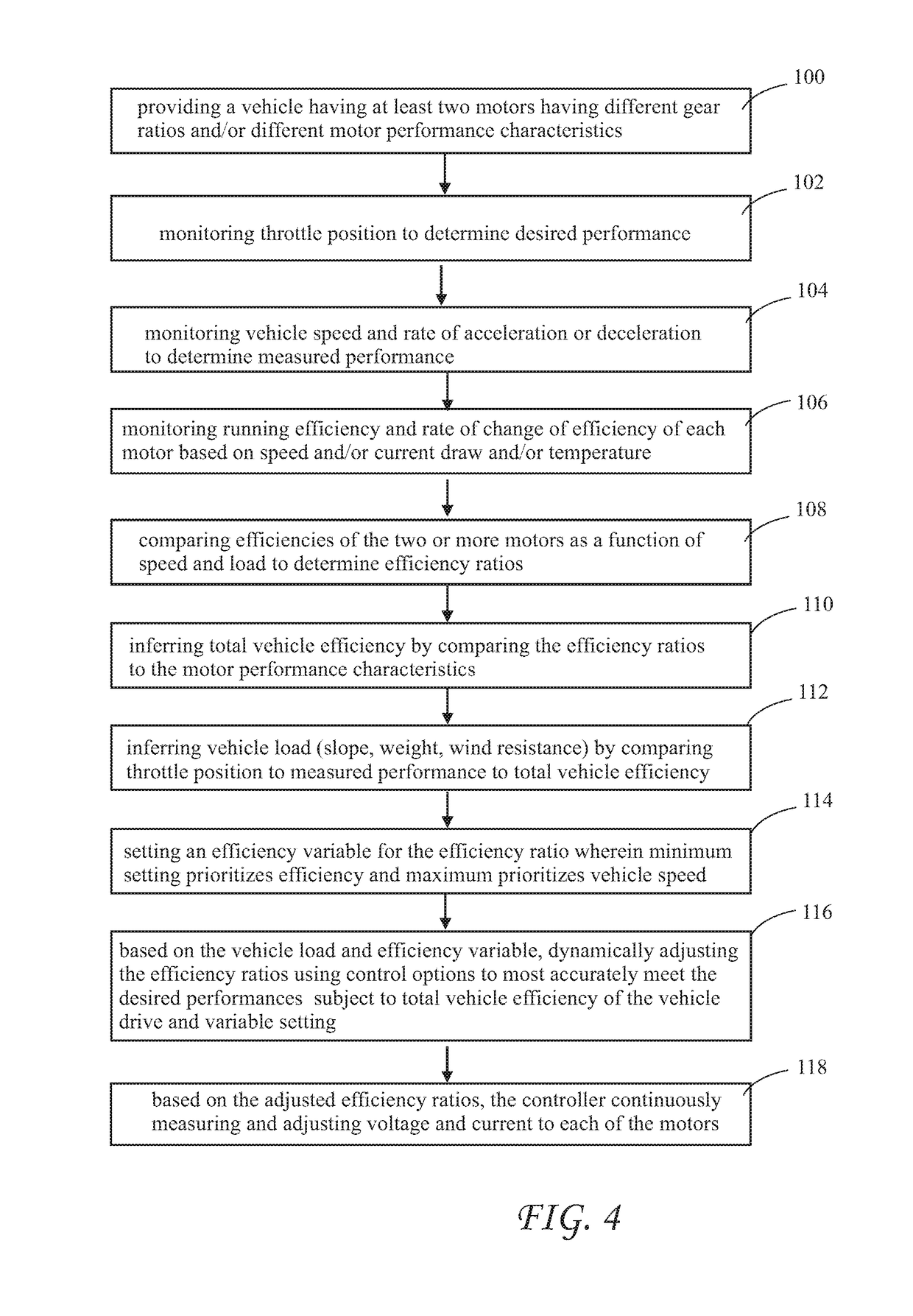Dynamic Electric Drive Control
a technology of electric drive and control circuit, which is applied in the direction of electric propulsion mounting, electric propulsion cycles, transportation and packaging, etc., can solve the problems of limiting factors, substantial time spent at low efficiencies, and poor efficiency curve, so as to maximize system efficiency, improve performance, and improve the effect of efficiency
- Summary
- Abstract
- Description
- Claims
- Application Information
AI Technical Summary
Benefits of technology
Problems solved by technology
Method used
Image
Examples
first embodiment
[0025]FIG. 2 shows a bicycle 10 having 10 electric motors 12a and 12b (for example, hub motors), the first motor 12a driving a front wheel 12a, and a second motor 12b independently driving a rear wheel 12b. The two electric motors 12a and 12b allow for the rear motor 12b to be geared for more torque and lower speed (creating a “first gear”) and the front motor 12a to be geared for higher speed with greater efficiency (creating a “second gear”). A processor (or controller) 16 monitors rider inputs (for example, throttle position, pedal torque, brake application, etc.) and vehicle data (for example, motor efficiency and vehicle speed and acceleration) and determines how to most efficiently power the bicycle 10 using a battery 18 providing current and voltage to the motors 12a and 12b. The controller may further have stored efficiency versus RPM data for the motors 12a and 12b. Overlapping the motors 12a and 12b with different applications of primary power (both current and voltage) al...
second embodiment
[0026]Alternately, motors can be connected to the wheels or axles through gears, chains or belts. When separate motors provide torque to right and left wheels of a three or four wheeled vehicle, an additional software function is incorporated to blend power on start up so that the low speed wheel doesn't receive so much power that it begins to steer the vehicle.
third embodiment
[0027]FIG. 3 shows a front or rear view of a three or four wheeled vehicle 20 having a seat 36, a front wheel 22a, and two motors 24a and 24b independently powering two independent wheels 22b and 22c. The motor 24a drives the wheel 22b through gears 26 and the motor 24b drives the wheel 22c through chain or belt 28. Sprague (or one way) clutches 30 may reside between the motors 24a and 24b and the axles 34a and 34b respectively to decouple a motor not providing torque to the wheels 22b and 22c. The motors 24a and 24b may be controlled as described for FIG. 2 to optimize efficiency.
[0028]A blend of the configurations may be used because the motor style used in the vehicle 20 may often generate low end torque more efficiently. Therefore some embodiments may have a “first gear” which is chain or belt driven and a “second gear” which is hub motor driven.
[0029]Additionally, for heavier applications, each wheel might have its own complete drive. That is, a wheel may be driven by one hub m...
PUM
 Login to View More
Login to View More Abstract
Description
Claims
Application Information
 Login to View More
Login to View More - R&D
- Intellectual Property
- Life Sciences
- Materials
- Tech Scout
- Unparalleled Data Quality
- Higher Quality Content
- 60% Fewer Hallucinations
Browse by: Latest US Patents, China's latest patents, Technical Efficacy Thesaurus, Application Domain, Technology Topic, Popular Technical Reports.
© 2025 PatSnap. All rights reserved.Legal|Privacy policy|Modern Slavery Act Transparency Statement|Sitemap|About US| Contact US: help@patsnap.com



